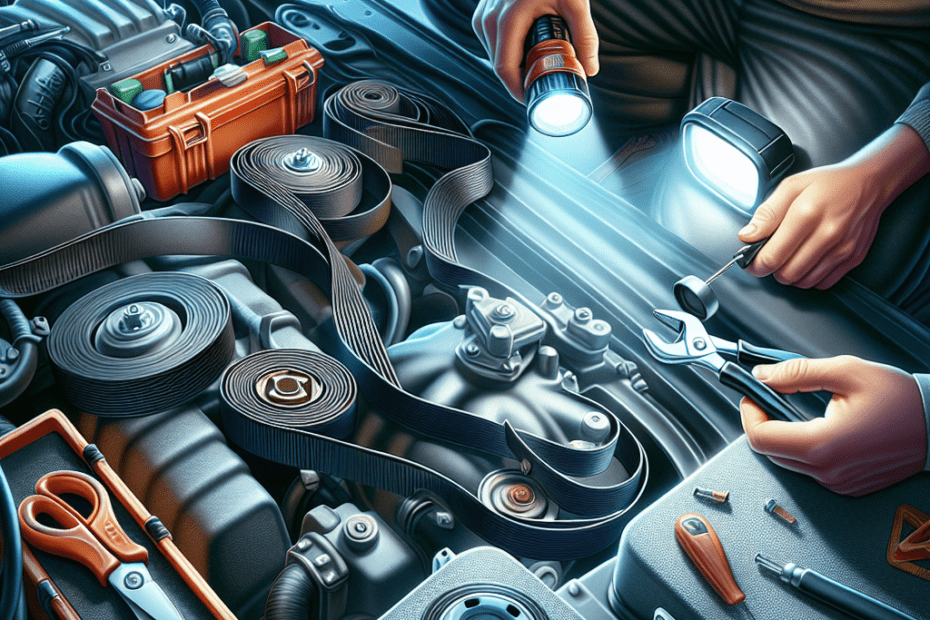How to Check and Maintain Car Belts
Cars are intricate machines that require regular maintenance to function optimally. One of the essential yet often overlooked tasks in car maintenance is checking car belts. These belts play a vital role in the operation of many engine components, and neglecting them can lead to significant issues. Understanding how to check car belts and knowing when they need maintenance is crucial for ensuring the longevity of the vehicle and the safety of its occupants.
Why Checking Car Belts is Important
Car belts, including serpentine belts and timing belts, ensure the smooth running of various engine components. According to the Car Care Council, approximately 19% of cars on the road require belt replacements (Car Care Guide). A worn-out belt can cause severe engine damage, leading to costly repairs. Home mechanics can prevent this by regularly performing a check car belts procedure as part of their routine vehicle maintenance.
Types of Car Belts
Before diving into how to check car belts, it’s essential to understand the different types of belts and their functions:
- Serpentine Belt: Drives multiple peripheral devices in an engine, such as the alternator, water pump, and air conditioner.
- Timing Belt: Synchronizes the rotation of the crankshaft and camshaft, ensuring proper timing of the engine’s valves and pistons.
- V-Belt: An older design often found in legacy and classic cars, performing similar functions to the serpentine belt but for individual components.
How to Check Car Belts
Step-by-Step Guide
- Turn Off the Engine: Before checking the belts, ensure the car is turned off and the engine is cool to avoid any accidents.
- Locate the Belts: Open the hood and locate the serpentine belt, timing belt, and any V-belts. Refer to the vehicle’s manual for precise locations.
- Inspect the Condition: Look for signs of wear and tear, such as cracks, fraying, glazing, or stretching. These are indicators that the belt may need replacement.
- Check the Tension: Use a belt tension gauge if available, or manually check by pressing down on the belt. There should be minimal slack, and it should not easily deflect more than half an inch.
- Listen for Sounds: Start the engine and listen for squeaking or chirping noises, which can indicate a loose or worn-out belt.
Let’s now look at an example of a maintenance schedule that can help keep the car’s belts in optimal condition.
| Interval | Maintenance Task |
|---|---|
| Every 10,000 miles | Visual inspection of belts |
| Every 30,000 miles | Check tension and wear |
| Every 60,000 miles | Replace timing belts |
| Every 100,000 miles | Replace serpentine belts |
Maintenance Tips
Proper maintenance can extend the life of car belts significantly. Here are some tips to keep in mind:
- Regular Inspections: Make it a habit to inspect the belts regularly for any signs of wear and tear.
- Proper Tension: Ensure the belts are always at the correct tension. Belts that are too tight or too loose can cause premature wear.
- Cleanliness: Keep the belts and surrounding areas clean to prevent dirt and debris from causing damage.
- Replace When Necessary: Don’t wait for the belt to break. If signs of wear are present, replace the belt proactively to avoid more significant problems.
Key Takeaways
Keeping an eye on car belts is a simple yet crucial aspect of vehicle maintenance. They should check car belts regularly for any signs of wear, proper tension, and listen for any unusual sounds. Following a maintenance schedule can help prevent unexpected breakdowns and costly repairs. Remember, timely inspections and proactive replacements are key to a well-performing and reliable vehicle.
FAQ
1. How often should car belts be checked?
Car belts should be visually inspected every 10,000 miles and checked for tension and wear every 30,000 miles.
2. What are the signs that a car belt needs to be replaced?
Signs include visible cracks, fraying, glazing, or stretching of the belt, as well as any squeaking or chirping noises from the engine area.
3. Can I replace the car belts myself?
Yes, with the proper tools and guidelines from the vehicle’s manual, someone with basic mechanical skills can replace car belts. However, for more complex tasks like timing belt replacement, professional help might be necessary.
4. What happens if a car belt breaks while driving?
A broken belt can lead to loss of power steering, overheating, and in some cases, severe engine damage, requiring costly repairs.
5. Is there a difference between serpentine belts and timing belts?
Yes, serpentine belts drive multiple peripheral devices, while timing belts synchronize the rotation of the crankshaft and camshaft, ensuring the engine’s valves and pistons work in harmony.
